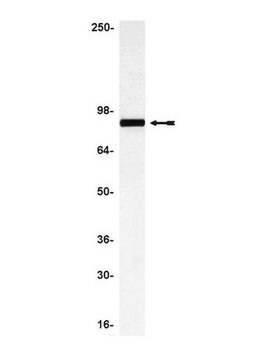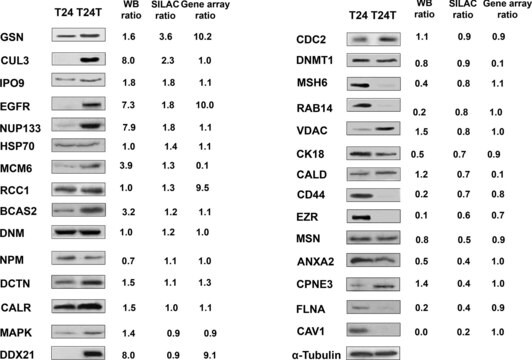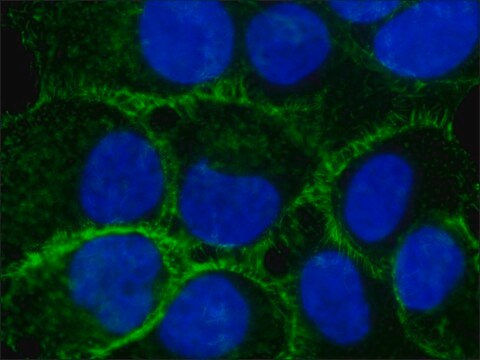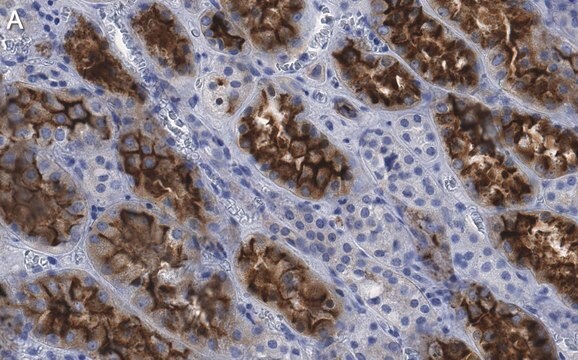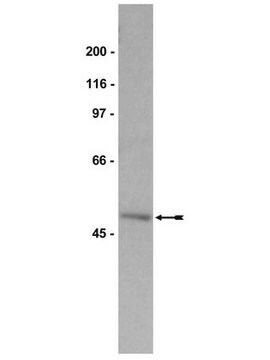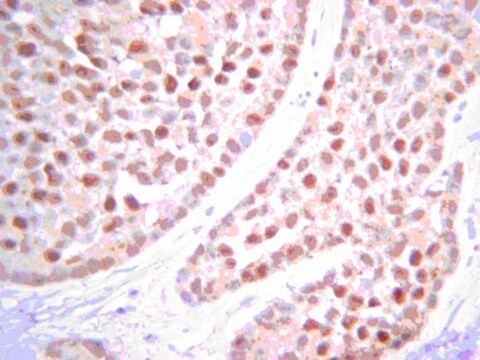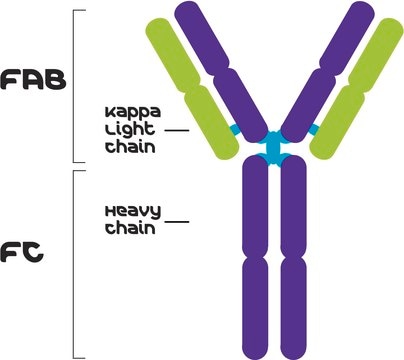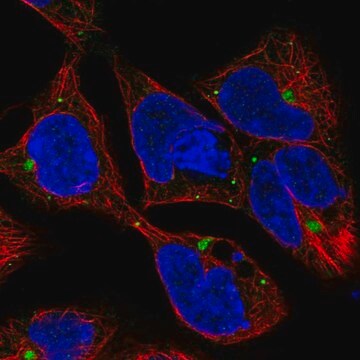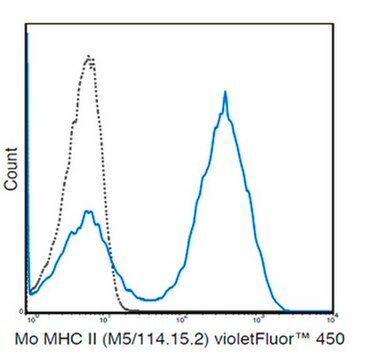MAB3822-C
Anti-Ezrin Antibody, clone 4A5, Ascites Free
clone 4A5, from mouse
Sinonimo/i:
Cytovillin, Villin-2, p81, Ezrin
About This Item
Prodotti consigliati
Origine biologica
mouse
Livello qualitativo
Forma dell’anticorpo
purified immunoglobulin
Tipo di anticorpo
primary antibodies
Clone
4A5, monoclonal
Reattività contro le specie
human, rat, rabbit, mouse
tecniche
electron microscopy: suitable
immunocytochemistry: suitable
immunohistochemistry: suitable
immunoprecipitation (IP): suitable
western blot: suitable
Isotipo
IgG1κ
N° accesso NCBI
N° accesso UniProt
Condizioni di spedizione
wet ice
modifica post-traduzionali bersaglio
unmodified
Informazioni sul gene
human ... EZR(7430)
Descrizione generale
Specificità
Immunogeno
Applicazioni
Cell Structure
Adhesion (CAMs)
Immunohistochemistry Analysis: A representative lot detected a higher Ezin immunoreactivity in paraffin-embedded human medulloblastoma sections when compared with normal cerebellum sections (Haeberle, H., et al. (2012). Neoplasia. 14(7):666-669).
Immunohistochemistry Analysis: A representative lot immunostained parietal cells in rabbit gastric mucosa (Hanzel, D.K., et al. (1989). Am. J. Physiol. 256(6 Pt 1):G1082-G1089).
Immunoprecipitation Analysis: A representative lot immunoprecipitated Ezin from human A431 cells. The immunoprecipitated Ezrin was phosphorylated on Ser66 from dbcAMP‐treated, but not cAMP‐treated, A431 cells (Wang, S., et al. (2009). Cell Res. 19(12):1350-1362).
Electron Microscopy Analysis: A representative lot detected Ezrin on microvilli of the intracellular canaliculi (IC) and the subapical region of resting parietal cells in Lowicryl HM20-embedded rabbit gastric gland ultrathin sections (Sawaguchi, A., et al. (2004). J. Histochem. Cytochem. 52(1): 77–86).
Immunocytochemistry Analysis: A representative lot detected exogenously expressed human GST fusion protein by fluorescent immunocytochemistry staining of formaldehyde-fixed, Triton X-100-permeabilized rabbit gastric parietal cells (Zhou, R., et al. (2003). J. Biol. Chem. 278(37):35651-35659).
Western Blotting Analysis: A representative lot detected both the endogenous rabbit Ezrin as well as exogenously expressed human Ezrin GST fusion proteins in transfected rabbit gastric parietal cells (Zhou, R., et al. (2003). J. Biol. Chem. 278(37):35651-35659).
ELISA Analysis: Clone 4A5 hybridoma culture supernatant was screened for its immunoreactivity by ELISA and found to react with both dentured and non-denatured 80 kDa Ezrin preparations from rabbit gastric glands/mucosa vesicular fractions (Hanzel, D.K., et al. (1989). Am. J. Physiol. 256(6 Pt 1):G1082-G1089).
Qualità
Western Blotting Analysis: 0.5 µg/mL of this antibody detected Ezrin in 10 µg of L6 rat myoblast lysate.
Descrizione del bersaglio
Stato fisico
Stoccaggio e stabilità
Altre note
Esclusione di responsabilità
Non trovi il prodotto giusto?
Prova il nostro Motore di ricerca dei prodotti.
Codice della classe di stoccaggio
12 - Non Combustible Liquids
Classe di pericolosità dell'acqua (WGK)
WGK 1
Punto d’infiammabilità (°F)
Not applicable
Punto d’infiammabilità (°C)
Not applicable
Certificati d'analisi (COA)
Cerca il Certificati d'analisi (COA) digitando il numero di lotto/batch corrispondente. I numeri di lotto o di batch sono stampati sull'etichetta dei prodotti dopo la parola ‘Lotto’ o ‘Batch’.
Possiedi già questo prodotto?
I documenti relativi ai prodotti acquistati recentemente sono disponibili nell’Archivio dei documenti.
Il team dei nostri ricercatori vanta grande esperienza in tutte le aree della ricerca quali Life Science, scienza dei materiali, sintesi chimica, cromatografia, discipline analitiche, ecc..
Contatta l'Assistenza Tecnica.